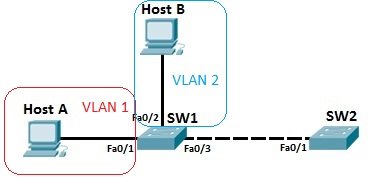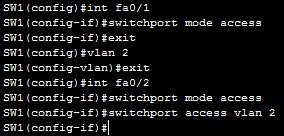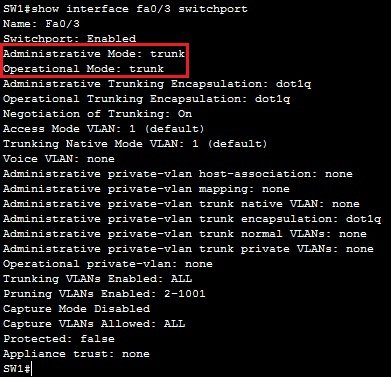To configure an interface to be an access interface, the switchport mode acess interface command is used. This type of interface can be assigned only to a single VLAN.
To configure a trunk interface, the switchport mode trunk interface command is used. This type of interface can carry traffic of multiple VLANs.
An example will help you understand the concept.
Host A and host B are in different VLANs, VLAN 1 and VLAN 2. These ports need to be configured as access ports and assigned to their respective VLANs by using the following sequence of commands:
Because the link between SW1 and SW2 needs to carry traffic of multiple VLANs, it needs to be configured as a trunk interface. This is done by using the following commands on both SW1 and SW2:
On SW1:
On SW2:
Now the link between SW1 and SW2 can carry traffic from both the VLAN1 and VLAN2. You can verify that an interface is indeed a trunk interface by using the show interface Fa0/3 switchport command on SW1:
VLAN 1 doesn’t have to be created, it exists by default. Also, by default, all ports are in the VLAN 1, so Fa0/1 doesn’t need the switchport access vlan 1 command.


